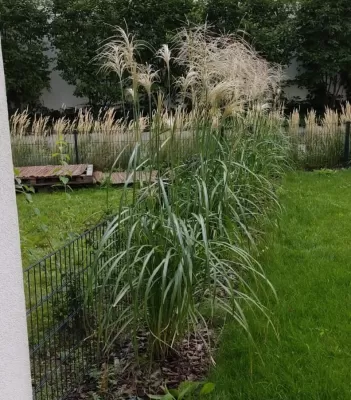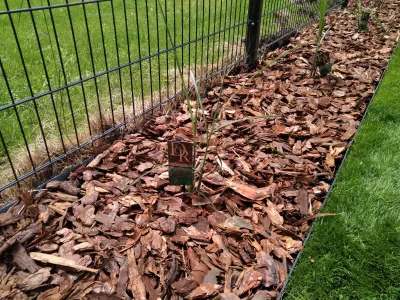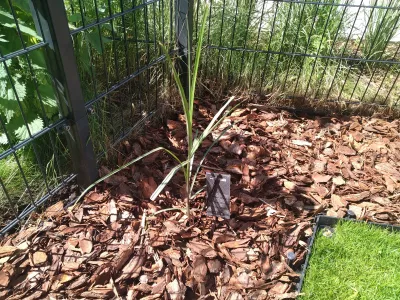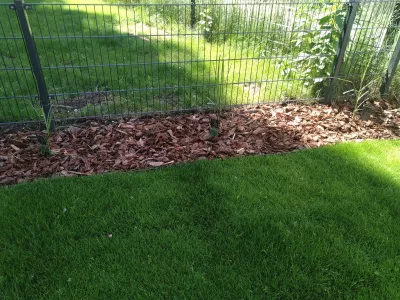Miscanthus chinese: a Far Eastern guest in the garden
Miscanthus Chinese belongs to the ornamental grasses of the bluegrass family. Many of the miscanthus varieties are suitable for cultivation in most countries.
Chinese miscanthus - in the garden, park, at their summer cottage
Chinese miscanthus (Miscanthus sinensis), also called fan-shaped and silvergrass or Chinese Silver Grass, is a perennial grass, wild forms of which grow in the Far East. It belongs to the bluegrass family and is closely related to sugar cane.
Miscanthus is one of the most spectacular cereals. Its main advantage is its stable decorative effect. Unlike many cereals, whose beauty is often limited in time, miscanthus are good throughout the summer and autumn, and even in early winter.
In nature, the plant prefers to settle in subtropical regions, but it is also found in subarctic regions. The abundance of heat, moisture, sunlight are important conditions for the active growth and flowering of the fan. In case of insufficient illumination, the cereal does not form ears. With a lack of precipitation, most of the growth energy is spent on growing rhizomes that reach aquifers at a depth of many meters.
Miscanthus introduction
The introduction of Miscanthus Sinensis into culture took place in the last quarter of the 19th century. The cereal, which was planted pointwise in the coastal zone of artificial reservoirs, grew into huge - up to three meters high - spherical bushes. The drooping leaves created the effect of a green fountain. Spikes covered with rime - M. sinensis blooms at the end of summer and in autumn - adorned the snow-covered garden.
Miscanthus sinensis – WikipediaThe new cereal was highly appreciated by gardeners in Europe and America. The list of ornamental grasses has been replenished with a promising plant that easily adapts to various climatic zones.
Variety of varieties
A century and a half of breeders' work has led to the emergence of many beautiful varieties of silvergrass. Ornamental-leaved varieties are striking in the variety of shapes and colors of the elongated leaf plate of the plant. Some hybrids give tall ears with well-visible panicles of beige, silvery, reddish inflorescences.
Some of the most sought-after varieties of flowering miscanthus chinensis include:
- Nippon. It is characterized by a moderate size of the bush (up to 1.5 m in width and height) and early formation of ears. In favorable conditions it blooms in the last decade of August - the first week of September.
- “Klein Fountain”. An even more compact variety with a spherical bush of one meter in diameter and variegated foliage.
- Nishidake. Not too tall (up to 1.7 m) plant with a dense bush that is not prone to falling apart and lodging even after strong winds and downpours.
- Malepartus. The bush is 2 m high, paniculate inflorescences of red-brown tones.
- Rotter Pfeil. Height up to 1.6 m. Red inflorescences are pleasing to the eye from mid-August. In autumn, the leaves also turn red, changing color from dense green to bright scarlet.
- Rozilber. The inflorescences are muted red, the autumn foliage has a copper sheen.
- Flamingo. Blooms in dark shades of pink, leaves turn orange at the end of the growing season.
Ornamental-leaved miscanthus varieties are preferred in cool climates. It:
- Blondeau. Two-meter leaves of a juicy green tone, when flowering forms a silvery-gray panicle. Frost resistant.
- Ferner Austin. Height up to 1.5 m. Leaves with a longitudinal central vein of white color, as autumn approaches, changing color to yellowish-red.
- Gracilimus. A characteristic feature of the variety is long (up to 1.5 m) narrow emerald green leaves. The refined elegance of culture is emphasized later, at the turn of September-October, the flowering of the cereal.
- Morning Light. Relatively low, rarely blooms in continental weather. Inflorescences of muted red tones. The leaves are narrow, with a central sector of green color and white borders around the edges.
- Strictus. The height of the bush is up to 2.7 m. The effective alternation of white and green transverse stripes in the color of the leaves guarantees a catchy attractiveness of the plant.
- Zebrinus. Up to 2.5 m in height. Similar to Strictus, but the color of the chlorophyll-free areas of the foliage is yellowish-cream.
- Dotted line. Not too dense bush with leaves, green areas of which are adjacent to a dull yellow color.
- Variegatus. The bush is up to 1.5 m high. The leaves are lined with green, white and shades of these flowers longitudinally.
- We value Purpurascens for the peachy tones of the leaves, which acquire a crimson color by autumn.
- Silberfeder. Tall (up to 2 m) plant. The bluish green tint of the leaves contrasts sharply with the central silver longitudinal stripe. When flowering, it gives volumetric inflorescences of a pale pink color.
- Purple Fall. The plant leaves in winter, decorated with red-purple foliage.
- Cabaret. Large (up to 2.5 m), but frost-sensitive plant. Leaves have wide longitudinal stripes.
Dwarf varieties of miscanthus with a height of 60 - 100 cm have been bred. These are the Japanese Yakushima variety, the German Little Miss, and the English Little Zebra. Domestic gardeners appreciate the unpretentious varieties Adagio and Africa.
In the catalogs of ornamental grasses, there are more than one hundred varieties of the Chinese fan with inflorescences painted in a range of colors from silvery white to deep burgundy. Miscanthus leaves are both rigid arrow-shaped, and curved to the ground, and drooping in the upper quarter of the shoot. The general pigmentation of the plant is from pale pink, salad and cream to grayish green and brown.
Perfect addition for garden and park
The voluminous silvergrass bushes never remain stationary if there is even the slightest movement of air. Looking at a swaying grain is as pleasant as looking at flowing water or a burning fire.
Decorating the edges of the green zone, miscanthus chinensis serves as an excellent background plant for the vibrant color of mid-summer. Sitting on the shore of a reservoir, the cereal thrives: the high humidity of the air and soil helps it grow in full force. Reflection of light from the water surface is added to the direct rays of the sun, due to which photosynthesis in the leaves of the cereal is especially intense.
Group plantings of miscanthus decorate remote areas of the park. A single plant can become the visual accent of a vast lawn. Assorted fans perfectly frame paths, stairs, active recreation areas. A large miscanthus growing next to a gazebo, pergola and bench for rest can become a home for songbirds - warblers, buntings, and warblers.
Agrotechnics of miscanthus
Taking care of miscanthus is easy. Unlike other ornamental grasses, the Chinese variety of silvergrass is not prone to uncontrolled growth and does not drown out neighboring plantings. Therefore, when planting a plant, it is enough to prepare a planting pit; there is no need to dig in rhizome growth restrictors (sheet metal, plastic, slate).
A thermophilic plant is planted in the spring after the soil warms up to 20-22 ° C. Miscanthus shoots hatch at temperatures above 25 ° C. Any autumn manipulations can destroy a plant that has entered the time of flowering and fruiting.
The planting hole for the fan should be filled with loose nutrient soil, if necessary, provided with drainage. The presence of a not too deep soil water horizon is an important factor in choosing a planting site. But if a shallow hole is quickly filled with water, you should not plant miscanthus in it: without access to atmospheric air, the rhizome may die.
Planting of a plant is carried out by transshipment from a container along with a lump of moistened earth. Miscanthus does not tolerate transplantation well. The operation should be performed with utmost care so that the lump does not deform and the thinnest processes of the root system do not break off.
After planting miscanthus in a permanent place, the plant should be watered abundantly with lukewarm water. In the future, timely watering should become the rule. Fertilizers are made starting from the second year of the life of a plant organism with strict regulation of nitrogen compounds. Excess nitrogen in the soil leads to the collapse of the bush, lodging of shoots and the loss of the aesthetic appeal of the cereal.
With the threat of severe frosts, the soil under the miscanthus is mulched, the shoots are shortened and covered with a hut made of dry vegetation. In the spring, before the start of growth processes, dry shoots and leaves of miscanthus must be cut off at the root.
Reproduction of miscanthus
A single miscanthus growing in one place for more than five years can produce several babies and turn into a group of closely knotted plants. Until mid-summer, or better in May-June, this group can be seated. However, the injury rate of such a transplant is high, and one cannot count on 100% success.
Growing miscanthus from seeds is not difficult. Seeds of cereal should be sown in a peat pot with nutritious soil. The retention of the variety of the fan by seed propagation is not guaranteed. Three or even four years pass from the moment the seeds hatch to the moment the plant turns into a beautiful bush.





